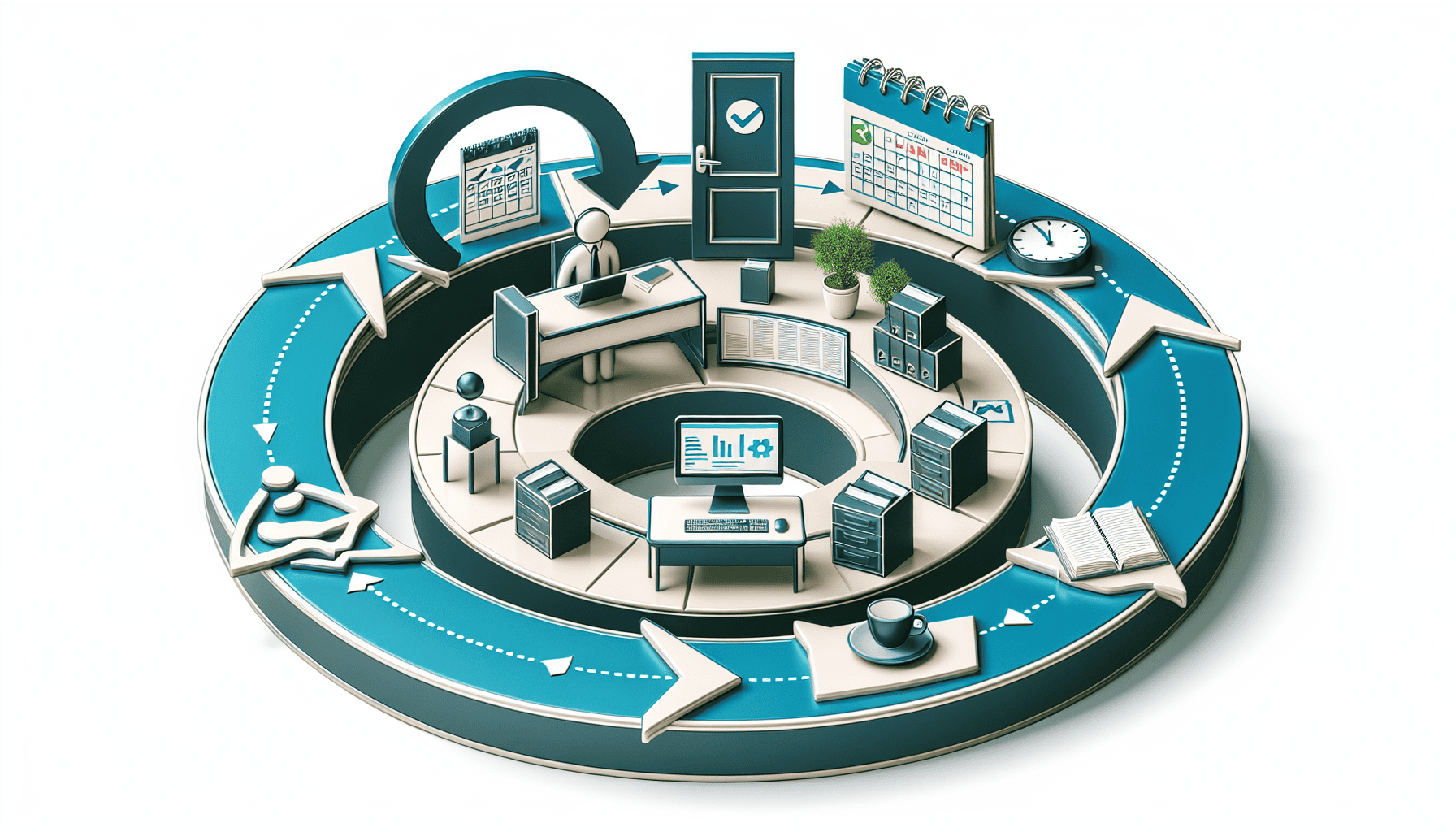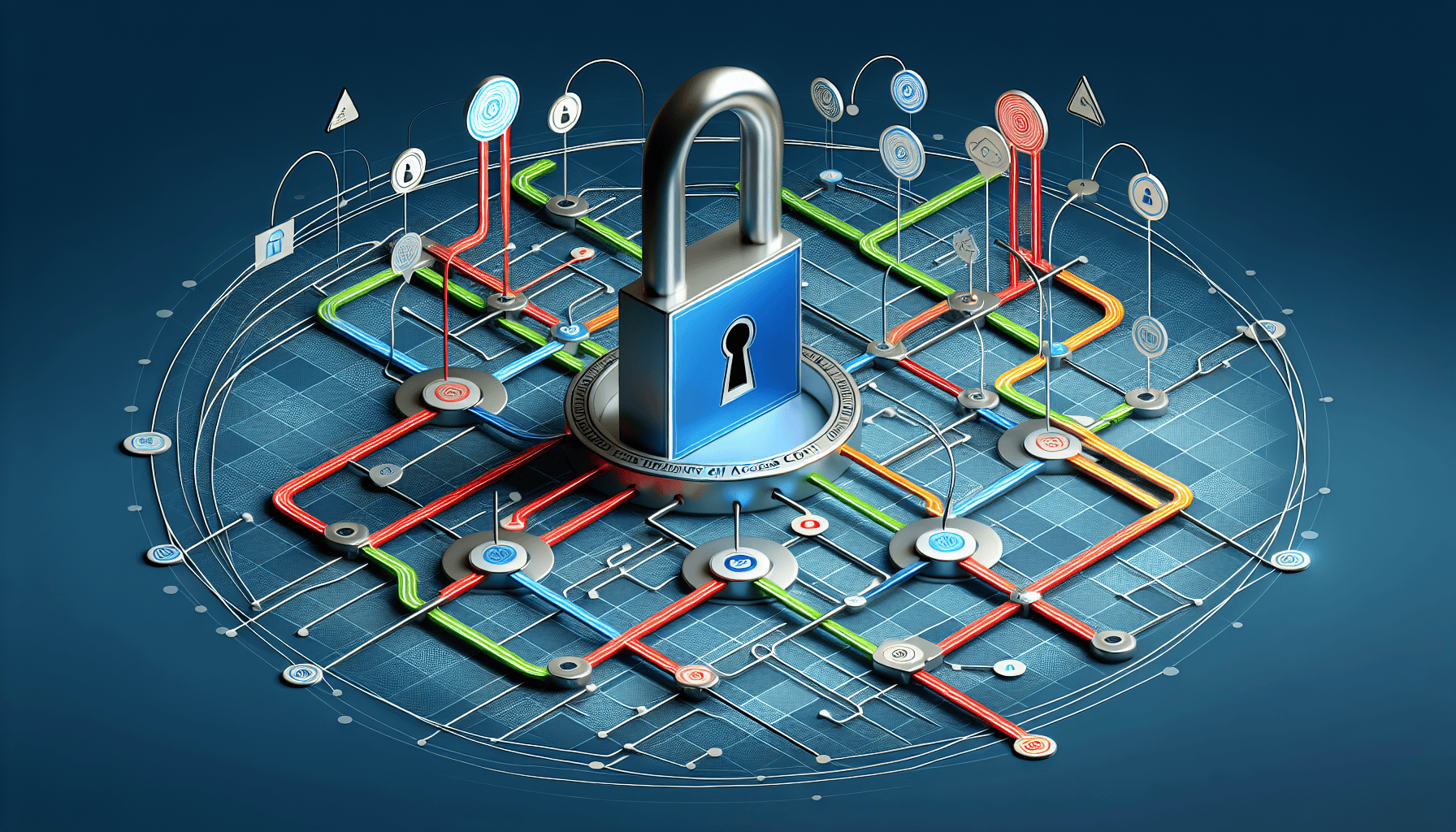What is Identity and Access Management (IAM)? It’s the backbone of IT security, a systematic approach that ensures only authorized individuals have the right to access certain information and resources in your organization. In the world where digital threats lurk at every corner, IAM is fundamental for regulating access, protecting against unauthorized intrusions, and maintaining compliance with industry regulations.
Key Takeaways
IAM is critical for IT security, controlling access to organizational resources based on authorization levels to secure sensitive data, mitigate breaches, and ensure compliance standards.
Effective IAM systems are comprised of Role-Based Access Control, Single Sign-On solutions, and Multi-Factor Authentication, which work together to streamline user access and enhance organizational security.
Deploying an IAM system requires careful planning and should be tailored to an organization’s specific needs, taking into account its business goals, IT landscape, and the need for effective cybersecurity training.
Demystifying Identity and Access Management (IAM)

We begin by understanding the basics of Identity and Access Management. At its core, IAM is a framework of business processes, policies, and technologies designed to streamline the management of electronic or digital identities, including privileged identity management. Think of IAM as the vigilant security guard of an organization, ensuring that individuals are granted access to resources based on their authorization levels while upholding security policies and compliance standards.
One may wonder, what makes IAM pivotal for IT security? Simple – it’s all about control and protection. By securing sensitive data, controlling user access, mitigating data breaches, and preventing identity theft, IAM plays a pivotal role in IT security. It serves as the shield that guards against unauthorized access and protects organizational systems and data from threats, both external and internal.
The Significance of IAM in Modern Security

The digital landscape of today underscores the significance of IAM more than ever. As organizations strive to safeguard sensitive data, IAM establishes a framework for:
Identity management
User access control
User authentication
Privileged account management
By ensuring that only authorized individuals, including privileged users, can access sensitive information and have elevated access, IAM mitigates the risks of data breaches, making it an indispensable component of modern security. Implementing the principle of least privilege further strengthens this approach by effectively managing privileged sessions.
IAM also plays a crucial role in upholding regulatory compliance, a factor that carries significant weight in today’s business world. By implementing standards, regulations, and protocols, IAM ensures comprehensive data protection and adherence to regulatory and compliance mandates. This rigorous control over access, including the management of privileged accounts, makes IAM a formidable ally in maintaining regulatory compliance.
Core Components of IAM Systems

With a grasp of the basics and significance of IAM, we can now examine its fundamental components. Role-Based Access Control, Single Sign-On solutions, and Multi-Factor Authentication form the backbone of any robust IAM system. These components work in harmony to provide a secure and efficient user experience, with each playing a unique role in the grand scheme of things.
Role-Based Access Control
Role-Based Access Control (RBAC) serves as the traffic light of IAM, regulating user access to safeguard resources, such as data. By categorizing privileges according to a user’s role, RBAC ensures that a software engineer doesn’t have access to financial data, or a marketer can’t meddle with software codes. This systematic approach to access management, including administrative access, provides a sense of order in the otherwise chaotic digital realm, while also addressing the need for privileged access management.
Yet, RBAC’s role extends beyond just preserving order. RBAC offers several benefits for secure data management, including:
Reducing administrative work and IT support
Preventing unauthorized access
Minimizing data breach risks
Providing scalability and flexibility to adapt to organizational growth
Role-Based Access Control (RBAC) is a vital component of any Identity and Access Management (IAM) system, especially when managing privileged roles.
Single Sign-On Solutions
Imagine having to remember a unique password for each application you use at work, including your service account. Sounds chaotic, right? Here, Single Sign-On (SSO) solutions prove to be a lifesaver. SSO solutions in IAM allow users to log into multiple applications or databases using a single set of login credentials, thereby enhancing both security and convenience for service accounts as well.
SSO enhances the user experience in IAM systems by:
Streamlining username and password management
Enabling quicker access to applications
Reducing the need for multiple logins
Enhancing usability for employees
Moreover, from a security perspective, SSO contributes to enhancing security in IAM by debunking the misconception that SSO compromises security.
Multi-Factor Authentication
Multi-Factor Authentication (MFA) emerges as a robust tool for bolstering security within IAM. MFA enhances security by requiring users to present multiple forms of verification to access resources, such as a password and a unique code from a mobile app or hardware device.
MFA holds immense significance in improving security in IAM, as it requires users to authenticate themselves using more than just a username and password. This heightened verification ensures that even if a password falls into the wrong hands, the additional layer of security provided by MFA keeps unauthorized users at bay.
Managing User Lifecycles with IAM

Similar to humans, user identities within an organization experience a lifecycle, spanning from onboarding to offboarding, and all stages in between. User lifecycle management in IAM encompasses the management of these identities, ensuring that access rights are updated and maintained throughout an individual’s tenure within an organization.
IAM oversees this lifecycle by:
Provisioning access to resources
Managing the user’s identity during their tenure
Facilitating the offboarding process when the user leaves the organization
Streamlining the application onboarding process, ensuring seamless integration with existing systems
It’s like a journey that each privileged user embarks on, with IAM acting as the efficient tour guide.
IAM’s Role in Regulatory Compliance

In a time where data breaches and cyber threats loom large, maintaining regulatory compliance becomes a top priority for organizations. And IAM plays a pivotal role in ensuring this compliance. By controlling access, separating duties, and providing audit trails for user activities, IAM assists organizations in complying with a range of federal and industry-specific regulations.
By ensuring the segregation of duties within an organization, IAM prevents any individual from exerting excessive control and mitigates the potential for fraudulent activities and regulatory noncompliance. Moreover, by providing audit trails for user activities, IAM serves as an essential component for compliance and security monitoring.
Advanced Features in IAM: Beyond the Basics
Venturing further into the IAM universe, we encounter advanced features that elevate both security and user experience. One such feature is biometric authentication, which leverages distinct personal traits, like fingerprints or facial features, to validate an individual’s identity, thereby notably improving the precision and dependability of identity verification.
AI-driven analytics and decentralized identity frameworks are other advanced features of IAM that further enhance security and user experience. AI-driven analytics help to identify anomalies and forecast potential security threats, while decentralized identity frameworks promote trusted interactions among users, organizations, and devices within IAM environments.
IAM Deployment Strategies for Organizations
The implementation of IAM within an organization is far from a cakewalk. It requires careful planning, identification of lead roles, and adherence to best practices. A successful IAM deployment strategy should be tailored to an organization’s specific needs, taking into account factors such as:
Business goals
Existing IT landscape
Cybersecurity enhancements
The need for a centralized authentication system.
Training is another crucial aspect of a successful IAM deployment. Role-specific training for various teams is essential to comprehend their responsibilities within the IAM framework. Moreover, cybersecurity skills training is necessary to identify and address potential security risks proficiently.
Common Challenges and Risks in IAM
Despite the multitude of benefits IAM brings, it does not come without its own set of challenges and risks. Configuration oversights, such as incomplete provisioning, inadequate process automation, and ineffective password policies, are common challenges that organizations face when implementing IAM. The accumulation of inactive accounts, often referred to as dormant or zombie accounts, poses a significant security threat.
Admin account sprawl, which refers to the widespread distribution and fragmentation of admin accounts across diverse systems and platforms, is another risk associated with IAM. It expands the attack surface for cybercriminals, heightens the risk of insider threats, and obstructs the enforcement of uniform security policies. However, with the right strategies in place, security administrators can effectively mitigate these challenges and risks.
Selecting the Right IAM Vendor for Your Needs
The selection of an appropriate IAM vendor is a critical choice with significant implications for an organization’s security stance. When selecting an IAM vendor, organizations need to consider factors such as features, scalability, and most importantly, integration capabilities. A vendor’s ability to integrate seamlessly with existing systems can have a significant impact on the organization’s overall IAM strategy.
The choice of an IAM vendor should align with the organization’s business goals and IT landscape. It’s not a one-size-fits-all solution, and hence, careful consideration and evaluation are essential. Remember, the right vendor can be the difference between a robust and secure IAM system and a weak and vulnerable one.
Real-World Applications of IAM
IAM extends beyond being a mere theoretical concept; it manifests in real-world applications that boost security and improve operations. For instance, IAM facilitates the management of access for remote workers, a crucial aspect in today’s increasingly remote work environment. By securely connecting the appropriate employees with resources at the necessary times, IAM ensures a secure and efficient remote work setup.
Another real-world application of IAM is in enhancing the security of mobile applications. IAM enables proper control over user access to sensitive information, provides secure access to company resources, and facilitates the central management of employee apps, thereby enhancing overall mobile security in an organization.
Evolving Trends in Identity and Access Management
As we near the conclusion of our exploration of IAM, a glance at the future trends is worthwhile. Evolving trends in IAM, such as passwordless authentication and the integration of IoT devices, are set to redefine the IAM landscape. Passwordless authentication, for instance, eliminates the need for passwords, using more secure options like biometrics or hardware keys for authentication.
Bring-Your-Own-Identity (BYOI) and IoT device integration are other trends to watch out for. BYOI enables users to use their own credentials to access services offered by various service providers, while IoT device integration enables scalable runtime access, increasing integration of IAM with IoT devices.
Summary
So there you have it – a comprehensive overview of Identity and Access Management. From understanding the basics to exploring its core components, from managing user lifecycles to maintaining regulatory compliance, we’ve covered it all. We also delved into the advanced features, deployment strategies, challenges, and real-world applications of IAM. And finally, we took a peek into the future of IAM, exploring the evolving trends that are set to redefine the IAM landscape. As we navigate through the digital world, IAM serves as the gatekeeper, ensuring the right individuals have the appropriate access. So, stay safe, stay secure, and embrace the power of IAM!
Frequently Asked Questions
What is meant by identity and access management?
Identity and access management (IAM) ensures that the right individuals and job roles in an organization can access the necessary tools to perform their duties, effectively safeguarding organizational resources and data from unauthorized access and fraud.
What does an identity and access manager do?
An identity and access manager ensures that the right people in an organization can access the tools they need to do their jobs, while also managing and restricting access to organizational resources. It’s a cybersecurity practice aimed at safeguarding data and resources from unauthorized access.
What is an example of identity and access management IAM?
An early example of IAM is a password-protected device, platform, or tool, where users create an account and enter a username and password for full access to resources.
What are the core components of IAM systems?
IAM systems include Role-Based Access Control, Single Sign-On solutions, and Multi-Factor Authentication, which are the core components for ensuring secure access and identity management.
How does IAM assist organizations in upholding regulatory compliance?
IAM helps organizations adhere to regulatory compliance by controlling access, separating duties, and providing audit trails for user activities. This ensures that organizations can meet federal and industry-specific regulations effectively.
